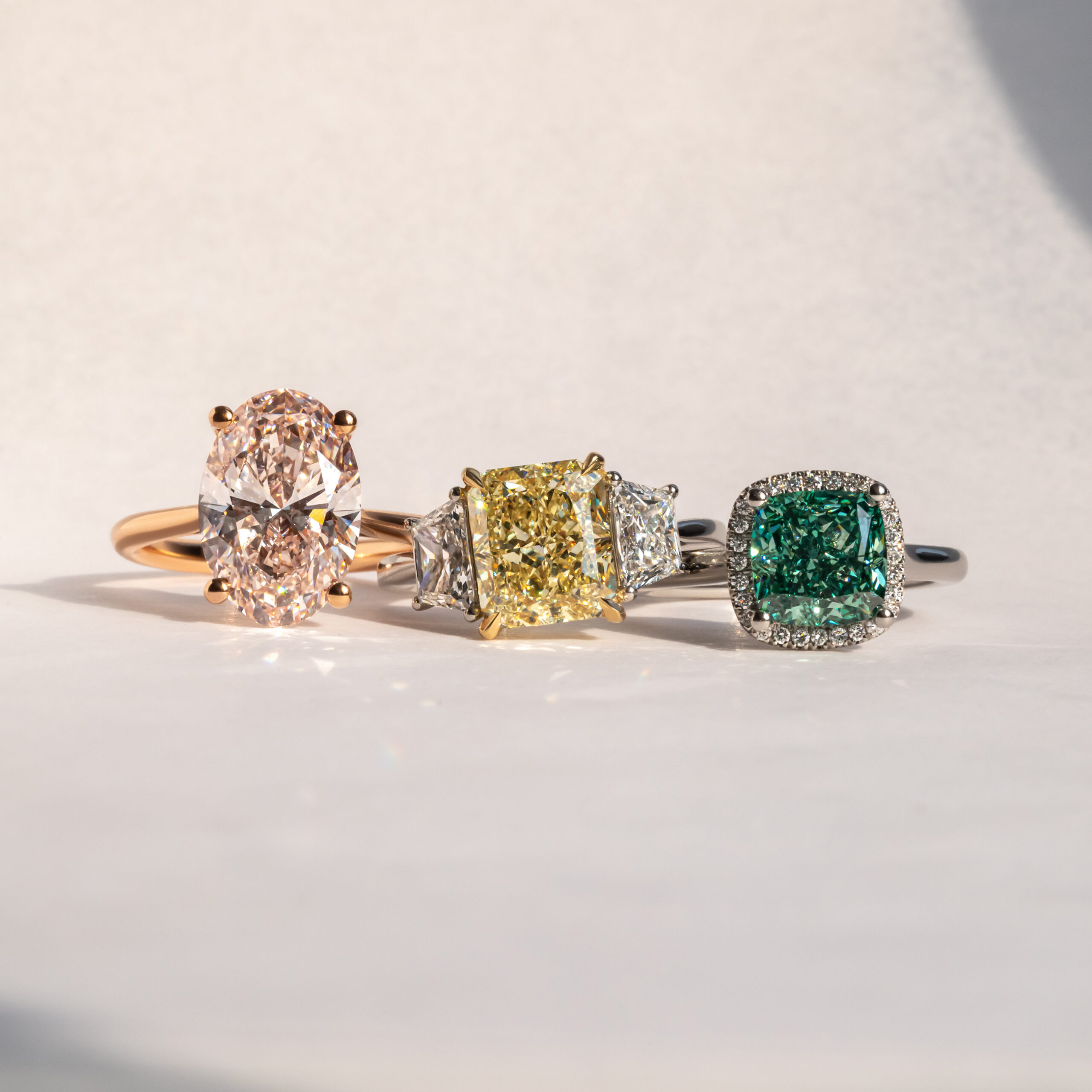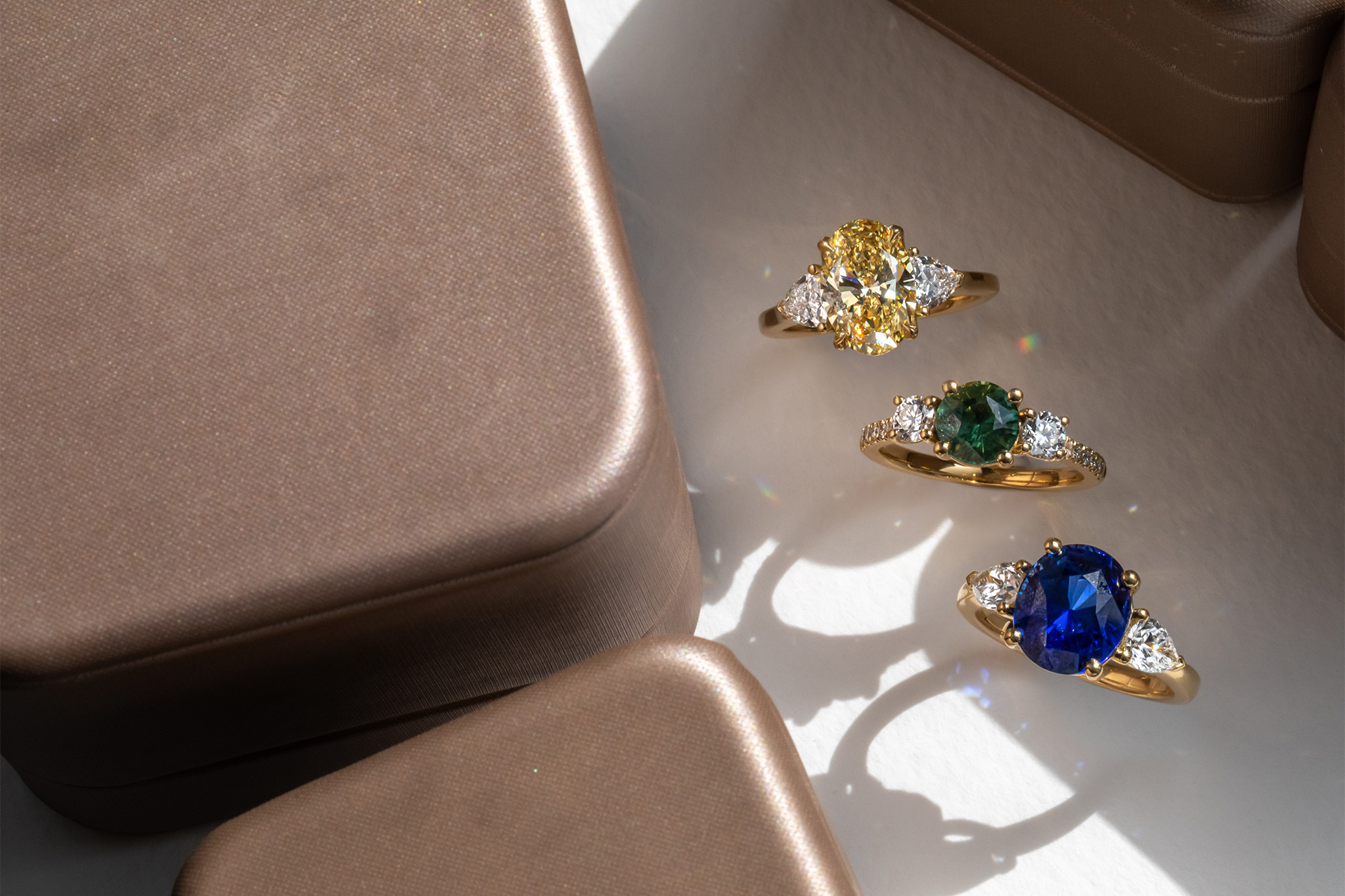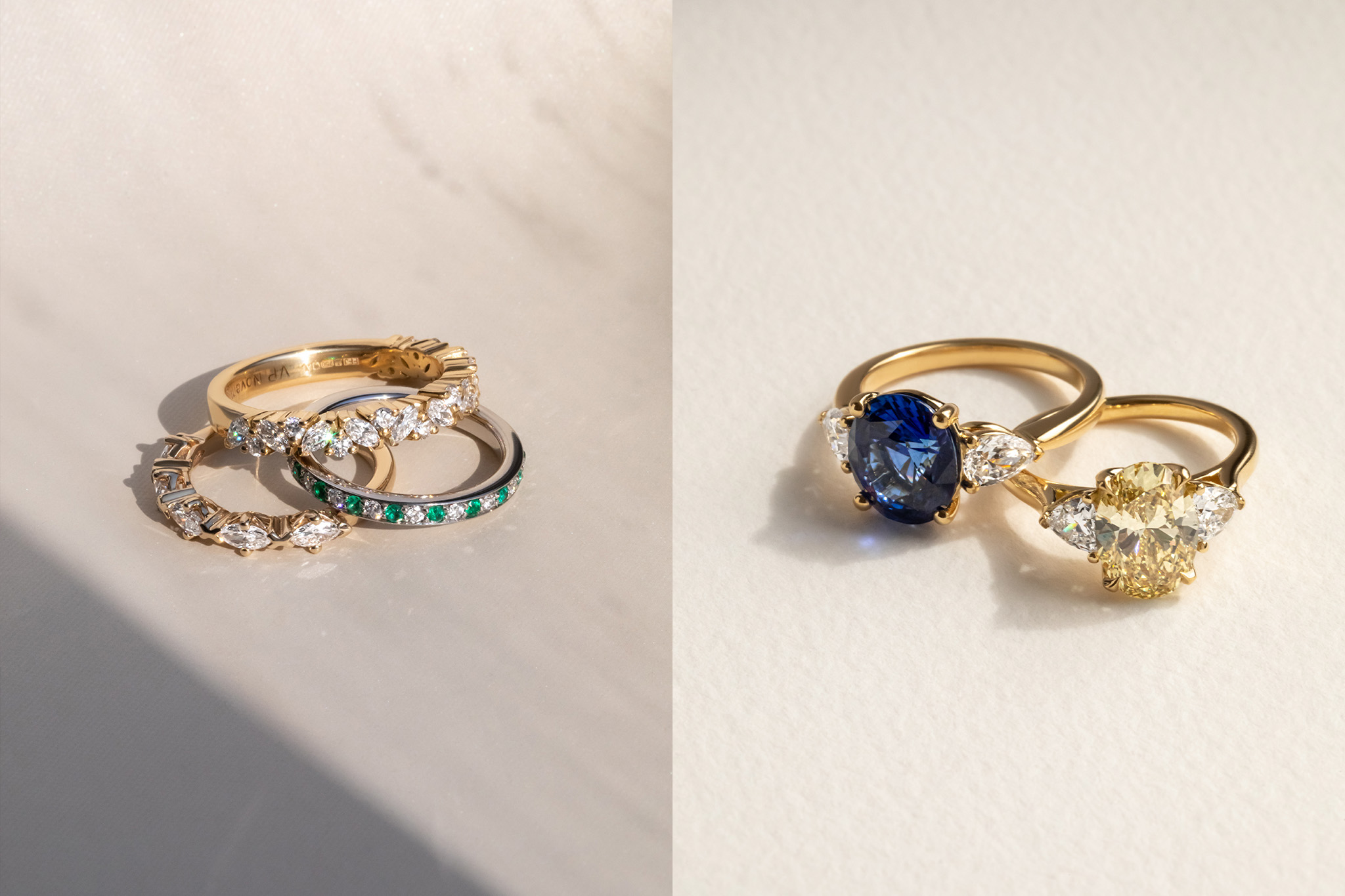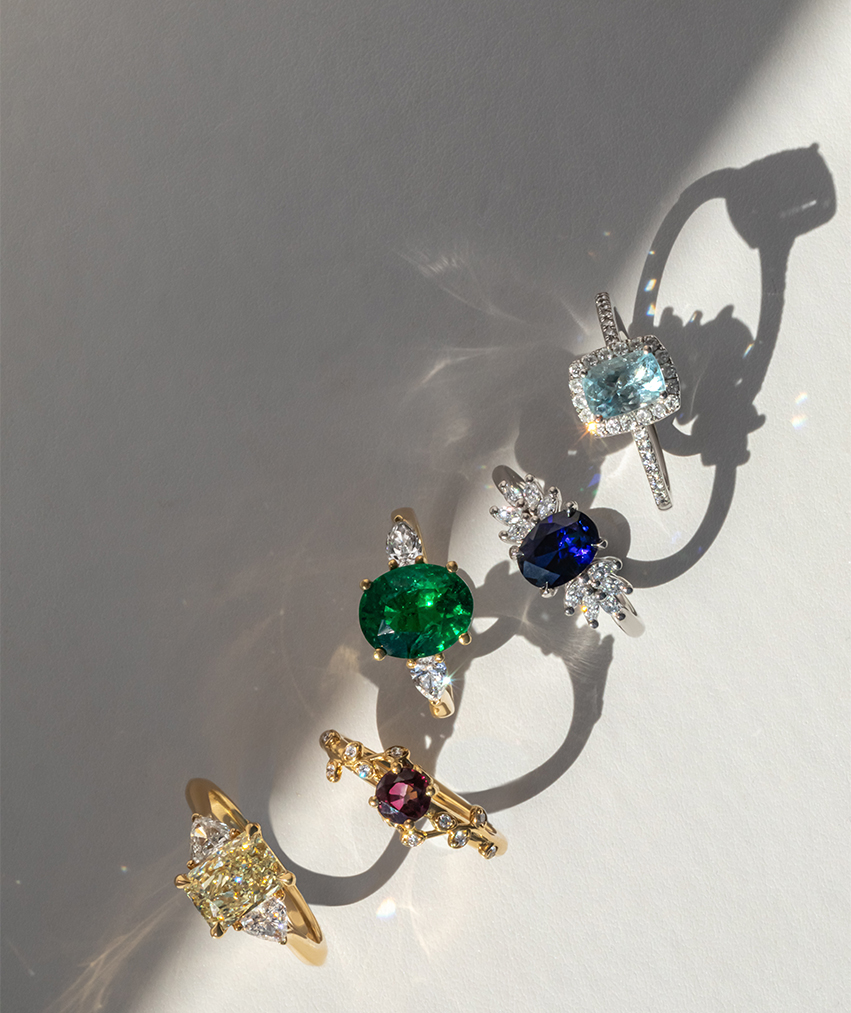
11 Aug 2025 — by Flawless Fine Jewellery — Reading time 3 minutes
Understanding Colored Lab-Grown Diamonds—Buying Guide
Understanding Colored Lab-Grown Diamonds—Buying Guide
Understanding Colored Lab-Grown Diamonds—Buying Guide
Colored lab-grown diamonds have become rapidly popular for consumers seeking a colorful, ethical, and affordable substitute for natural-colored diamonds. With advancements in technology, consumers can now purchase lab-created colored diamonds in nearly every color imaginable, from classic yellow and pink diamonds to vibrant blue and green diamonds. Whether you are looking for a distinctive engagement ring or an eye-catching piece of jewelry, colored lab diamonds offer a breathtaking diamond option for natural stones, combined with affordability and customization.
This guide will prepare you to understand everything you need to know before making your purchase of colored lab-grown diamonds, such as how they are created, what to look for, and how you will ultimately make your selection based on the lab-grown diamond color chart.

Topics covered:
- What Makes Colored Diamonds So Special?
- Types of Colored Lab-Grown Diamonds
- The Lab-Grown Diamond Color Chart
- Benefits of Buying Loose Colored Lab Diamonds
- How to Evaluate Colored Lab-Grown Diamonds
- Certified vs. Non-Certified Lab Grown Colored Diamonds
- Popular Uses of Colored Lab-Grown Diamonds
- Are Man-Made Color Diamonds Durable?
- Tips for Buying Colored Lab-Grown Diamonds
- Why Colored Lab Diamonds Are Worth It?
What Makes Colored Diamonds So Special?
Colored lab-grown diamonds are diamonds that are created with advanced technology, such as chemical vapor deposition (CVD) or High-Pressure High Temperature (HPHT). These diamonds are very similar to natural diamonds, which have the same physical, chemical, and optical characteristics. During the growth process or through the treatment methods, the color of the lab diamonds can be produced naturally. These diamonds are eco-friendly, making them a smart choice for eco-conscious buyers. The bright colors have also increased their desirability among people looking for a unique product.

Types of Colored Lab-Grown Diamonds
Lab-created colors diamonds come in many hues. Some of the more popular colors are:
Blue lab-created diamonds : Blue color is achieved through boron in the growth phase.
Pink and red diamonds : Pink and red are achieved through post-growth treatment or high-pressure formation.
Green diamonds : Green diamonds are produced through radiation exposure, either in the growth phase or afterwards.
Yellow and orange diamonds occur due to nitrogen presence.
In cultured colored diamonds, each color may vary from light to dark intensity, and these differences can impact the color, rarity, price, and desirability of the diamond.
The Lab-Grown Diamond Color Chart
When searching for colored lab-grown diamonds, it is important to reference the lab-grown diamond color chart, which will indicate both the intensity and tone of color. The color chart traditionally has the colors broken into groups of Fancy Light, Fancy, Fancy Intense, Fancy Vivid, and Fancy Deep.
Fancy Light : Soft, subtle colors that are great for understated elegance.
Fancy Vivid : Bold and saturated colors that are rare and usually expensive.
Fancy Deep: Very saturated, dark and rich colors that are the most dramatic.
Having an understanding of the lab-grown diamond color chart will help you make a more informed decision as you are selecting a stone based on both your tastes and budget.

Benefits of Buying Loose Colored Lab Diamonds
Buying loose lab-grown colored diamonds offers flexibility when designing jewelry. Whether you’re creating a special piece for an engagement ring or pendant, selecting a loose stone allows you to see the diamond’s color, cut, and clarity up close before it is set.
Additional benefits include:
Flexibility in design and setting options.
Transparent pricing, knowing you are only paying for the stone, with no extra setting costs.
Investment potential, based on rare or intensely colored stones.
How to Evaluate Colored Lab-Grown Diamonds
Like colorless diamonds, colored lab-grown diamonds should also be assessed on their four Cs: cut, color, clarity, and carat weight. However, color remains the most significant factor in colored diamonds. Here’s where to take note:
Color : The color, tone, and saturation should be consistent and visually pleasing. Use the lab-grown diamond color chart as a guide.
Cut : A properly cut diamond improves brilliance and accentuates the color more than poorly cut stones.
Clarity : There are typically inclusions in lab-grown diamonds, but clarity should still be assessed regarding the overall beauty.
Carat : Larger stones will display color better, and this will put the price point higher than smaller stones.
Always ask for a grading report from reputable labs such as IGI or GIA to ensure your synthetic-colored diamonds are of high quality.
Certified vs. Non-Certified Lab Grown Colored Diamonds
Certification is particularly critical when buying lab-created colored diamonds, as it gives you peace of mind about the quality and authenticity of the diamond. Certified diamonds have information about origin, color grade, and any treatments.
Certified cultured colored diamonds make it easier to resell, insure, and appraise, meaning they are often a better buy in the long run.
Popular Uses of Colored Lab-Grown Diamonds
Because of their striking looks and convenient price point, artificially colored diamonds can be found in many types of jewelry :
Engagement Rings : A pink or blue diamond makes a romantic, unique alternative.
Earrings and Pendants : Perfect for enjoying the sparkle and color of the diamond.
Anniversary or statement pieces : Great for celebrating special moments and showcasing bold color.
Are Man-Made Color Diamonds Durable?
Yes, man-made colored diamonds are durable and as tough as natural diamonds, scoring a 10 on the Mohs hardness scale. They are the perfect choice for long-wearing everyday jewelry, including rings, bracelets, and earrings. They are a durable choice, resistant to scratching, and a beautiful investment!
Tips for Buying Colored Lab-Grown Diamonds
Here are a few suggestions to help you in purchasing the ideal diamond :
Know your color preference : Use the lab-grown diamond color chart to see the variety of shades available.
Determine the level of intensity : Decide whether you prefer soft or bold depending on your style and budget.
Verify certification : Ensure the stone comes with a lab report.
Purchase from a reputable source : Make sure they specialize in lab-grown colored diamonds and are upfront about what they provide.
Why Colored Lab Diamonds Are Worth It?
Coloured diamonds, created in a lab, open up a sparkling world of possibility for anyone looking for unique jewellery. Whether you are searching for loose coloured lab diamonds, or putting the final touches on a center stone for a ring, coloured diamonds are available in beauty, are bright, are an excellent value purchase, and are ethical. There is a coloured diamond for everyone, from muted shades on the lab-grown diamond colour chart and classic bold brilliance with synthetic coloured diamonds.
When you shop, always buy coloured diamonds that are certified, lab created, and from a reputable seller. And don’t forget to consider your design aspirations, before you purchase. there is so much colour to choose from, cultured coloured diamonds re a new a significant way to express yourself.
